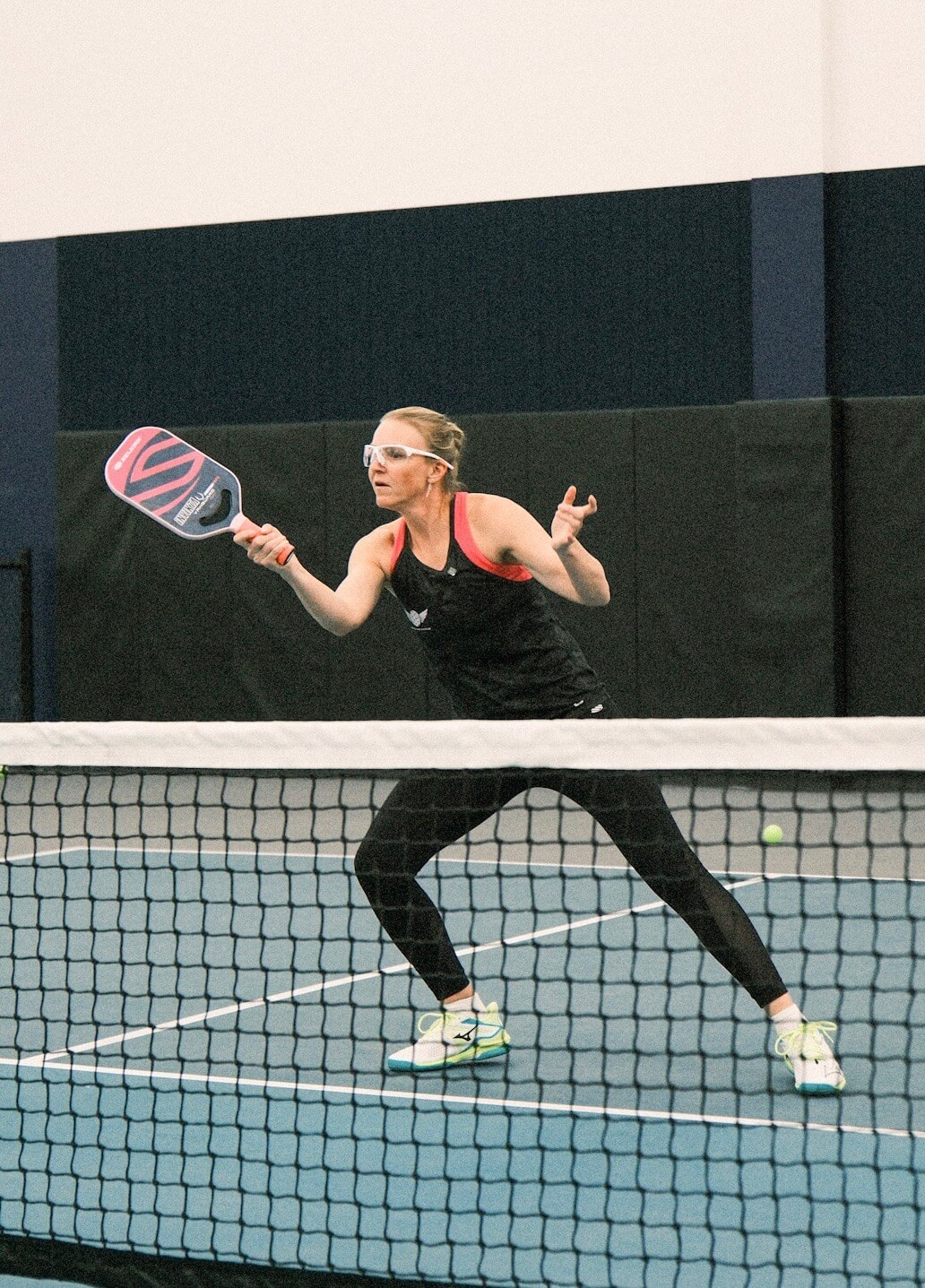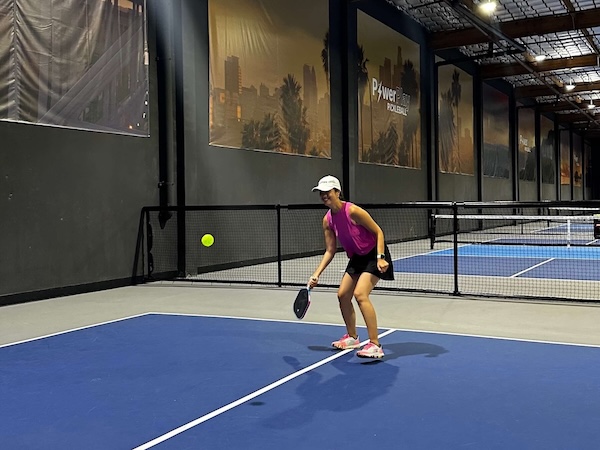Forehand Roll Volleys with a Touch of Punch
Yield: Fewer Errors and More Success
One of the most common mistakes I see is players not utilizing the forehand roll volley when up at the kitchen line. Players tend to resort to punch volleys for higher balls, which isn’t a bad idea if the ball is at shoulder level or higher. But as soon as the ball starts to drop below your shoulder or even below the height of the net, the roll volley is the key to attacking that ball, adding spin, and rolling it down to your opponents’ feet.
Ingredients
- 1 Part Decision Making
- 1 Part Technique
- 1 Part Patience
- 1 Part Practice
Instructions
1. The first step is understanding the height of the ball you are going to volley. This is at contact point, not as it crosses the net. A lot of pickleballs drop, so by the time we are making contact, that ball is lower than we initially expected. If the ball is high enough (or you are low enough), a punch volley is great. If it drops, it’s time to use the roll volley. (Fig. 1)

2. To complete a punch volley, rotate the paddle face to face the ball the tip of the paddle between 12 and 3 o’clock. Make contact out in front and punch through the ball in the direction you want the ball to go. This isn’t a swing, it’s a punch. The hit is flat, and the ball will not have much spin on it, but it will have pace. (Fig. 2)

3. To complete a roll volley, open the paddle face to be parallel with the net by opening your shoulder. Imagine you are pushing a couch in front of you and how that would feel with a laid-back wrist rather than opening your arms wide. Your paddle will be off to the side and potentially facing down (between 3 and 5 o’clock). (Fig 3)

4. Now comes patience! You will need to wait for that ball to come to you (still out in front) and then rotate your paddle from low to high without breaking your wrist or changing your paddle face direction. It’s like your paddle is a windshield wiper in front of you. Make sure you stay in a low stance and aim for your opponents’ feet. You should see topspin on this ball.
5. Be ready for the ball to come back. A roll volley is often a set-up for the true put away on the next shot.
6. Now it’s time to practice. Have a partner at midcourt hit a mixture of drops and drives at you. Depending on the height of the ball, either punch or roll it. The more we practice, the easier it becomes to stay calm and execute when under pressure in a match.
Enjoy your delicious rewards of fewer volleys into the net, more pop-ups from your opponents, and the joy of hitting a well-executed shot.
For the full video watch below:
*Stay tuned for the next installment of "Susannah's Secret Sauce: Cooking Up a Better Pickleball Game"












